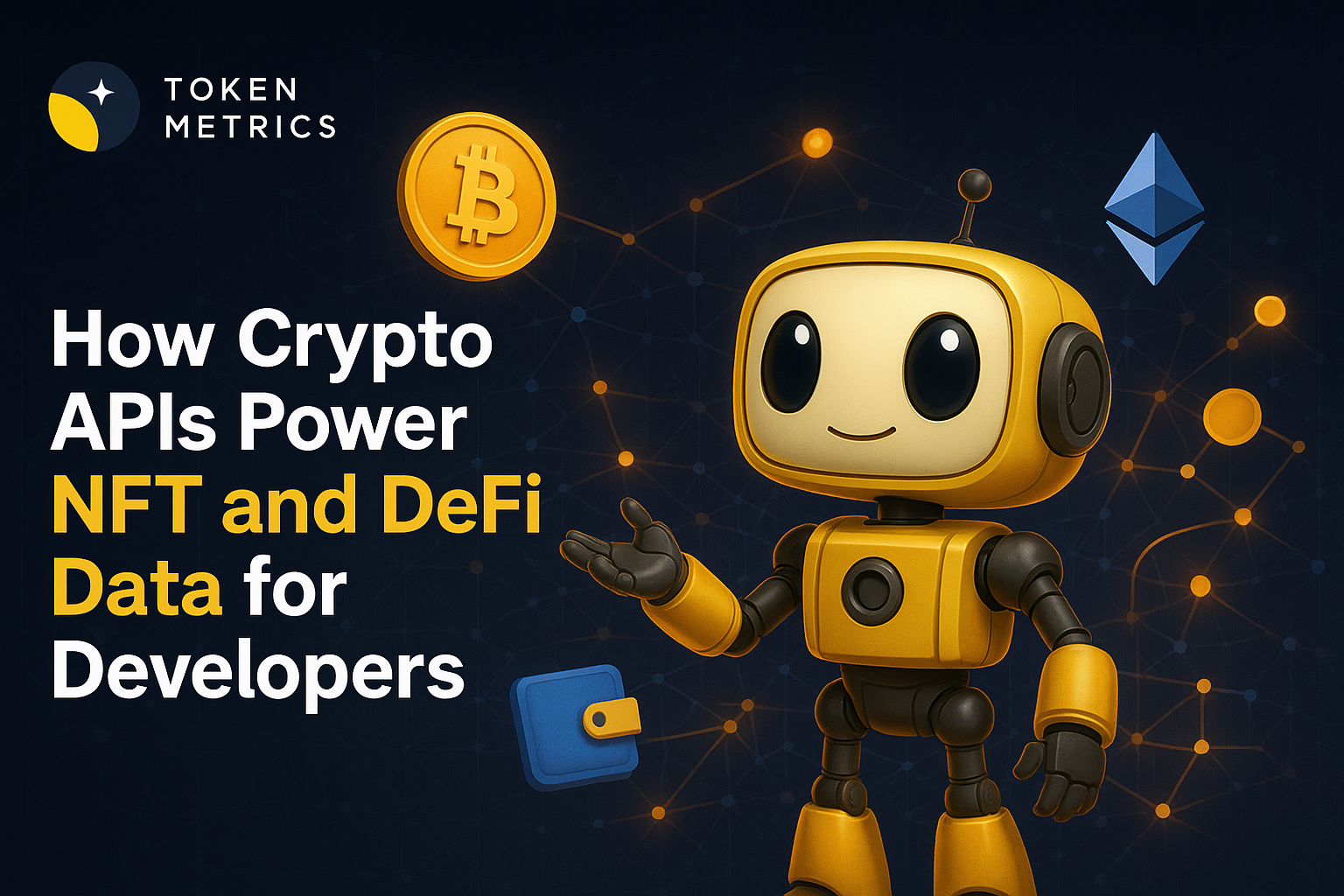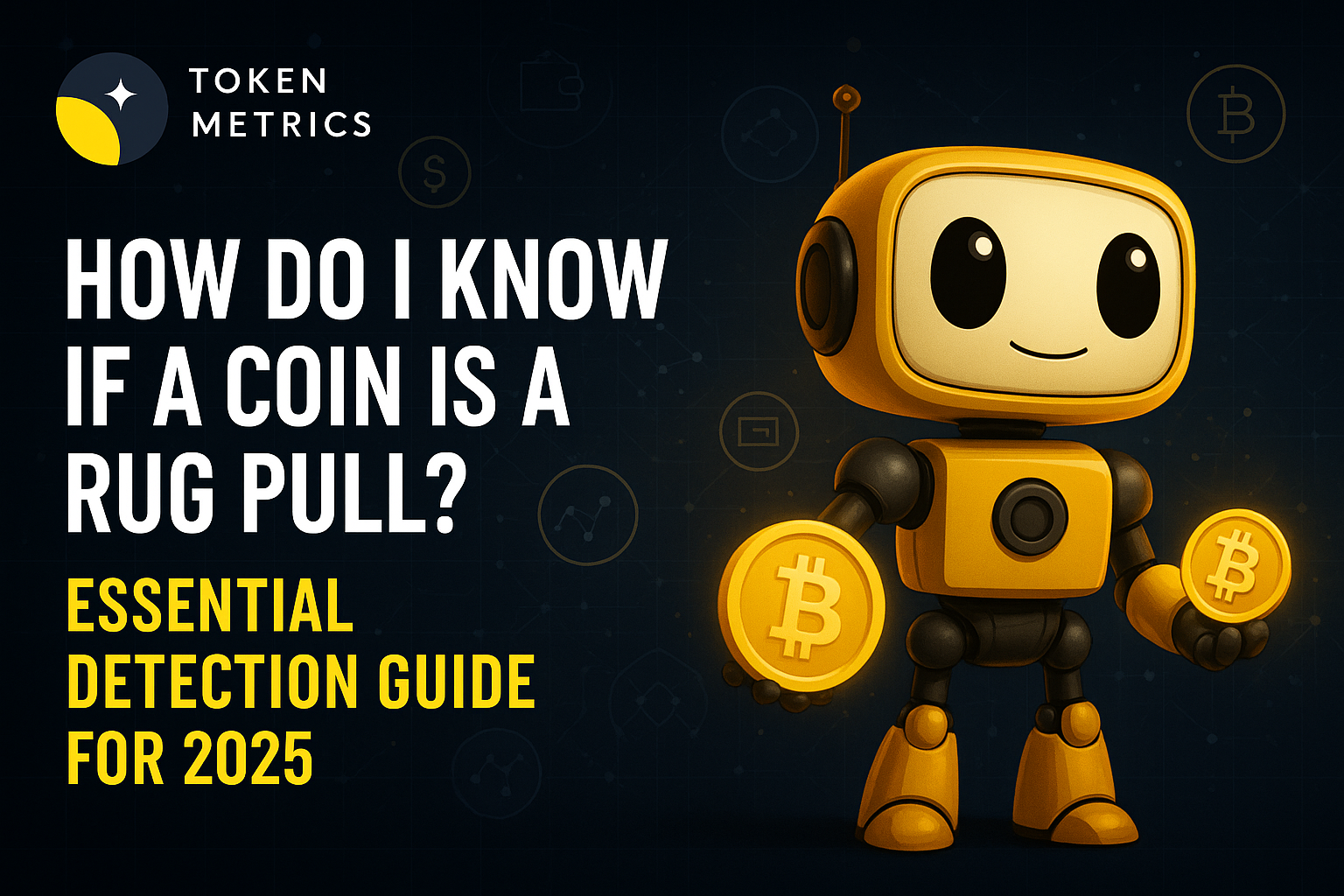
How Crypto APIs Power NFT and DeFi Data for Developers

The explosion of NFT and DeFi applications has dramatically increased demand for reliable blockchain data. Developers and analysts seeking to build innovative crypto projects often ask: do crypto APIs provide data for NFTs and DeFi protocols—and if so, how can this fuel smarter apps and insights?
What Are Crypto APIs and Why Are They Important?
A crypto API (Application Programming Interface) is a set of endpoints and protocols that connect applications to blockchain networks or data aggregators. Instead of directly querying nodes or parsing blocks, developers can access a stream of blockchain-related data in real time via these APIs.
APIs abstract away the technical complexity of on-chain data, providing accessible methods for retrieving token prices, wallet balances, transaction histories, smart contract events, NFT metadata, and DeFi protocol information. This simplifies everything from price tracking to building sophisticated crypto apps and analytics dashboards.
Accurate, up-to-date blockchain data is the foundation for researching NFT projects, assessing DeFi protocol health, and even powering AI agents tasked with blockchain tasks. Leading crypto APIs provide developers with high-level access, so they can focus on building features instead of managing blockchain infrastructure.
NFT Data Accessible Through Crypto APIs
Non-fungible tokens (NFTs) have unique data structures, including metadata, ownership history, royalty rules, and underlying assets. Many modern crypto APIs cater to NFT-specific data retrieval, facilitating applications like NFT wallets, galleries, marketplaces, and analytics platforms.
- Ownership & provenance: APIs can fetch real-time and historical information about who owns a given NFT, how ownership has changed, and related on-chain transactions.
- Metadata and imagery: Developers retrieve NFT metadata (e.g., images, attributes) directly from smart contracts or token URIs, often with additional caching for speed.
- Marketplace integration: Some APIs aggregate current and past prices, listing details, and sales volumes from top NFT marketplaces.
- Activity monitoring: Event endpoints allow tracking of NFT mints, transfers, and burns across chains.
Popular NFT API providers—such as OpenSea API, Alchemy, Moralis, and Token Metrics—differ in their supported blockchains, rate limits, and depth of metadata. When selecting a crypto API for NFTs, compare which standards are supported (ERC-721, ERC-1155, etc.), ease of integration, and the richness of returned data.
How Crypto APIs Handle DeFi Protocol and Market Data
Decentralized finance (DeFi) relies on composable smart contracts driving lending, trading, yield farming, liquid staking, and more. Accessing accurate, real-time DeFi data—such as TVL (total value locked), pool balances, lending/borrowing rates, or DEX trade history—is critical for both app builders and researchers.
Leading crypto APIs now offer endpoints dedicated to:
- Protocol statistics: TVL figures, liquidity pool compositions, APYs, token emissions, and reward calculations.
- Real-time DeFi prices: AMM pool prices, slippage estimates, and historical trade data across major DEXes and aggregators.
- On-chain governance: Information about DeFi protocol proposals, votes, and upgrade histories.
- User positions: Individual wallet interactions with DeFi protocols (e.g., collateral, borrowings, farming positions).
APIs such as DeFi Llama, Covalent, and Token Metrics provide advanced DeFi analytics and are popular among platforms that track yields, compare protocols, or automate investment analyses (without providing investment advice). Evaluate the update frequency, supported chains, and the granularity of metrics before integrating a DeFi data API.
Key Benefits and Limitations of Using APIs for NFT and DeFi Data
APIs offer significant advantages for NFT and DeFi development:
- Rapid access to up-to-date blockchain information
- Abstraction from blockchain-specific quirks and node maintenance
- Ready-to-integrate endpoints for user-facing dashboards or backend analytics
- Support for multi-chain or cross-standard data in a unified interface
However, there are trade-offs:
- Rate limiting can throttle large-scale data pulls.
- Data freshness may lag behind direct node access on some platforms.
- APIs sometimes lack coverage for emerging standards or new protocols.
Choosing the right API for NFTs or DeFi often means balancing coverage, performance, cost, and community support. For applications that require the most recent or comprehensive data, combining multiple APIs or supplementing with direct on-chain queries might be needed. Developers should review documentation and test endpoints with sample queries before full integration.
Real-World Use Cases: NFT and DeFi Applications Powered by APIs
Several innovative crypto products rely on powerful APIs to fetch and process NFT and DeFi data:
- Portfolio dashboards: Aggregating NFT holdings, DeFi investments, token balances, and performance metrics into a single user interface.
- Market analytics tools: Analyzing trends in NFT sales, DeFi protocol growth, or liquidity volatility across multiple chains and protocols.
- AI-driven agents: Enabling bots that track NFT listings, monitor DeFi yields, or automate position rebalancing using real-time data streams (without human input).
- Compliance and reporting systems: Automatically tracking on-chain ownership, yields, or trade histories for tax and regulatory requirements.
Whether for wallet apps, analytical dashboards, or next-gen AI-driven crypto agents, high-quality data APIs serve as the backbone for reliable and scalable blockchain solutions.
Build Smarter Crypto Apps & AI Agents with Token Metrics
Token Metrics provides real-time prices, trading signals, and on-chain insights all from one powerful API. Grab a Free API Key
FAQ
Can I get NFT metadata using crypto APIs?
Yes, most reputable crypto APIs allow you to retrieve NFT metadata, including images, attributes, and collection information, typically by querying token contract addresses and token IDs.
Which DeFi protocols are supported by mainstream APIs?
Coverage varies, but leading APIs often support Uniswap, Aave, Compound, Curve, MakerDAO, and other top DeFi protocols on Ethereum and other blockchains. Always check API documentation for a full, updated list.
Do crypto APIs support multichain NFT and DeFi data?
Many APIs now offer multi-chain support, enabling data retrieval across Ethereum, Polygon, BNB Chain, Avalanche, and other major ecosystems for both NFTs and DeFi activity.
What should I consider when choosing an NFT or DeFi API?
Key factors include supported blockchains and standards, data freshness, endpoint reliability, documentation quality, pricing, and limits on API calls. Community trust and support are also important.
How do APIs differ from blockchain node access?
APIs abstract away protocol complexity, offering simplified data endpoints, caching, and error handling, while direct node access requires technical setup but can provide lower-latency data and broader customization.
Disclaimer
This article is for informational and educational purposes only. It does not constitute investment advice, an offer, recommendation, or solicitation. Please conduct your own research and seek professional advice where appropriate.

.svg)

Create Your Free Token Metrics Account

.png)




%201.svg)
%201.svg)


%201.svg)









.svg)




.png)